One of my most memorable African experiences is hands down the time I was able to walk with Gorillas. Gorilla Trekking in Uganda is high up on people’s lists and for a good reason. It is a breathtaking experience to hike through a jungle, come within meters of a wild gorilla, having them look you in the eye and interact with you. This is the second part of my Overland trip with Nomad Tours traveling through Uganda!
Update 2019/2020: The cost of an Uganda gorilla permit will be $700 in 2020, still less than half of Rwanda’s $1,500 price tag. Alternatively, I went gorilla trekking a second time but this time to see the Eastern Lowland Gorillas in the Kahuzi Biega National Park of the DR Congo. These are the rarest and largest of the gorilla species and the experience was absolutely unbelievable. Make sure to read my post visiting the Congo as well!
To read about my detailed experience trekking with the gorillas, here is a collection of all my posts.
- Gorilla Trekking in Uganda – Bwindi National Park
- Gorilla Trekking in Rwanda – Volcanoes National Park
- Gorilla Trekking in the DRC – Lowland Gorillas of the Kahuzi Biega
Kampala to Lake Bunyonyi
Day 1 of our tour starts out leaving our hotel in Kampala around 8am. The drive is eight hours to Lake Bunyonyi but this is Africa and 8 hours usually means at the very best. Double up that number to be safe. As May is the wet season, everything is unpredictable and it turned out that one of the bridges we needed to cross had gotten damaged during the rain storm the night before so we would have to take the (much) longer route.
The drive is mostly uneventful as I started getting to know all my fellow travelers. We pass through some little towns and just like the other East African countries, all the kids stare at us waving, and chasing after our truck to which I happily wave back. The Ugandan landscape is constant throughout the journey; green, lush, and hilly. In fact, I think Uganda is the greenest country I’ve ever seen and its beauty is reaffirmed as I drive through the countryside.

Lunchtime Detour
Because of our detour, the estimate is now 12 hours. As our new route was unfamiliar to the guides, we had to stop in the middle of nowhere to quickly eat our lunch. We ended up stopping next to a village and we quickly drew crowds and crowds of people staring at us as we ate our makeshift Western food. The kids looked at us with befuddled faces wondering what on Earth we were doing on the side of the road in a huge truck and eating strange food. Nevertheless, this was a fun experience as we ended up giving some leftovers to the locals and they were incredibly curious to try out this mystery food, that was just pasta and sausage.

Lake Bunyonyi Campsite
Day 2-4 – Lake Bunyonyi and Gorilla Trekking
We continued on after waving to the kids and it would take us a total of 15 hours to reach our campsite! The detour doubled up our expected time of travel from the morning! We reached the campsite at 11pm! How the gorilla permits work is half of our group of 17 goes one day, and the other half the next. How they determine which day you went is random but once the day is decided, it is final. In total, we would have 3 nights at Lake Bunyonyi. The Lake Bunyonyi Overlanders campsite had all the amenities needed; wifi, hot showers, toilets, bar, etc.
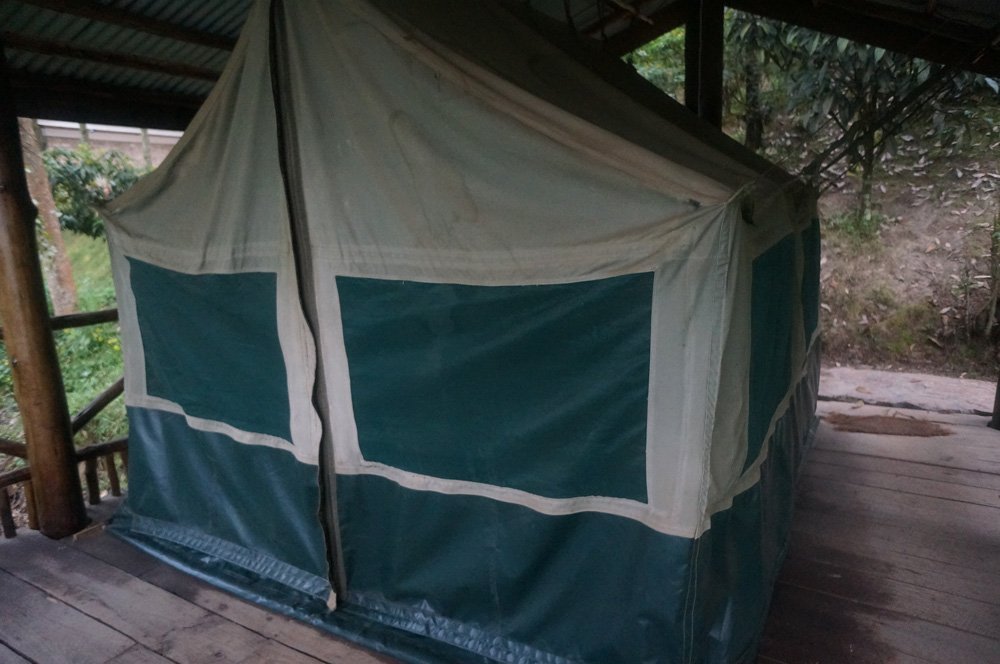
Because we arrived so late, no one felt like setting and tents and upgraded to permanent tents with beds for 12$ a night. I was so exhausted I just wanted to pass out and luckily, I was scheduled to trek the day after so I could sleep in.
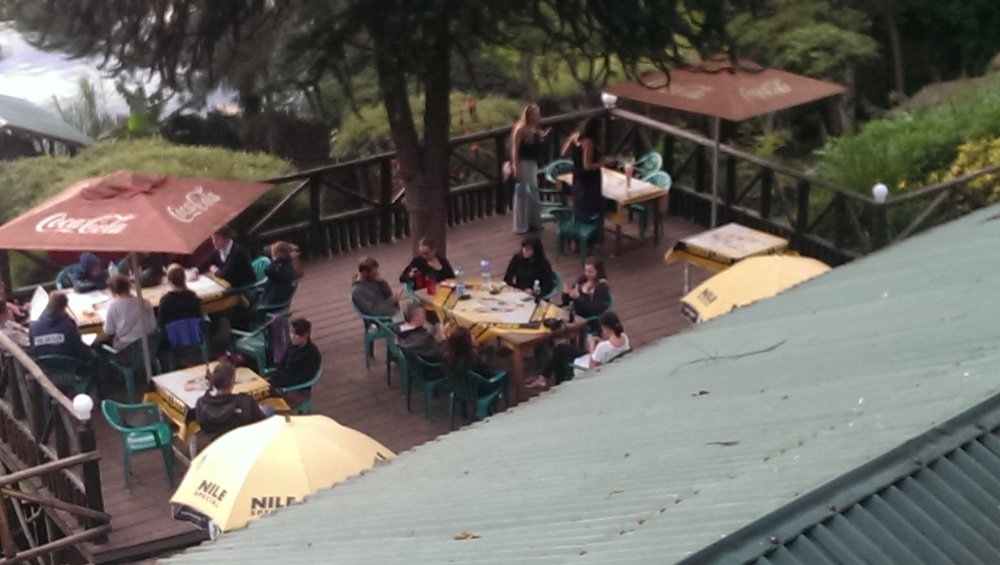

What to do at Lake Bunyonyi?
The main purpose of our stay here is for the gorillas but not everyone can go on the same day. Six of us stayed behind the first day and the day is spent at our leisure. There are a few activities that can be done here for a price like a visit to the island of the pygmies, one of Africa’s last remaining, hanging out by the lake, or taking a hike around the area. We elected to take a hike to the top of a hill to get a better view of the area and what a spectacular area it is.

Or to mix it up, jump off this 8 meter diving board into the lake. The lake is safe for swimming!
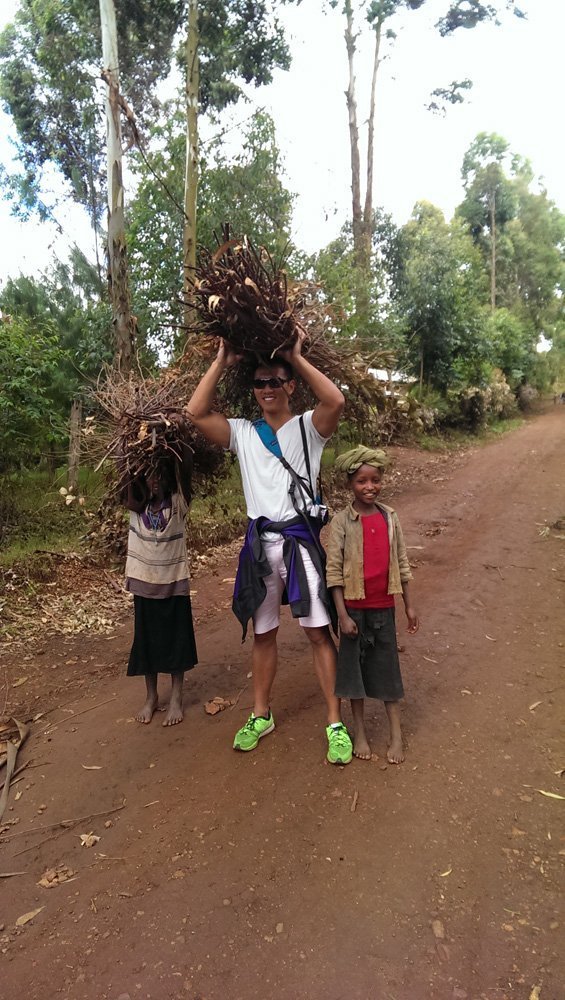
The lake is massive, and is dotted with small islands and mountains in the background. The lake is actually one of the deepest lakes in the world at over 2km deep. We took in the views, had a few beers, and walked through the neighboring village playing with the local kids (the people in Uganda are incredibly friendly) before finally getting back to our campsite.
We hung out by the lake and waited for our tour mates to come back. It rained heavily all throughout the morning so we were wondering how they fared. When we saw them, most of them were completely miserable as they had gotten destroyed by the rain. Mud covered their entire bodies but while they looked defeated, they were all smiles about what they had seen.
Now it’s my turn.
Gorilla Trekking Facts
Best time of year to trek?
Gorillas can be experienced year round. During the rainy season, the only certainty is uncertainty. There could be a week of rain followed by a week of sun, you just don’t know. I did my trek during the rainy season and I lucked out as our day was sunny, beautiful, and not a single rain drop. However, when it rains, the trek itself will likely be shorter as the gorillas come down from the mountains to get their food.
Where to Trek?
Gorillas are concentrated in Uganda, Rwanda, and the Democratic Republic of Congo. There’s about 800 mountain gorillas remaining the wild and they are scattered around the forests where these three countries converge. In Uganda, where I went, the Bwindi Impenetrable Forest is the destination. In Rwanda, it is the Volcanoes National Park. In the DRC, it is the Virunga National Park. The trek itself can take anywhere from half hour to eight hours. From what I’ve gathered, there is more or less a 100% success rate of seeing the gorillas as you hike until you see them.
How to book/cost?
The “Gorilla Permits” are your tickets to trekking. Each country is different. Uganda is 700$ (discounted to $350 in the wet season of April and May), Rwanda is 1500$ and $400 in the DRC. This price ONLY includes entrance to the park with your guides for the day. Getting to the parks and accommodations are completely separate, although I’m sure there are many package deals. Obtaining the gorilla permits need to be done ahead of time as they only allow a certain number of trekkers each day.
Rwanda or Uganda?
I can’t compare the two from first hand experience but from everyone that I’ve talked to that has done Rwanda, they all have rave reviews. While Rwanda is more expensive (750$ vs 600$), it is better for the time strapped travelers as the Volcanoes National Park is just a two hour drive from Kigali International Airport. The Bwindi, however, is an 8 hour drive from Entebbe at best so, an Uganda trek would require a minimum of 3 days.
Is it safe?
Depends on what you’re after. Gorilla trekking in Uganda is definitely safe in terms of human interventions. You won’t find any guerrillas in the jungle, just gorillas. There are no poisonous snakes or snakes but there are forest elephants, leopards, and wild gorillas. These are the most dangerous threat to a person. However, there are two people with AKs accompanying you at all times to ward off any would be attackers. The gorillas themselves are “habituated”, meaning they are used to human contact and are docile around humans. Of course, doing something stupid like running after their young is ill-advised and could lead to death by gorilla.
What to pack for a gorilla trek?
This part is incredibly important. ALthough there will just be some days where no matter what you bring, there’s nothing that can prepare you for mother nature.
- Long pants, preferably rain proof
- Waterproof jacket
- Hiking shoes if it is raining
- Multiple long tube socks to prevent ants
- Sunscreen
- Mosquito repellent
- 2L of water
- Good camera and thorough knowledge of how to change aperture as leaves will get in the way of taking good pics
I didn’t have anything waterproof but I was lucky and it did not rain on my day. All in all, I didn’t find it that difficult of a hike and there were people well into their 60s on my trip that made it.
My time with the gorillas
The day of the trekking starts early. I’m up at quarter to five without any problems. I was so excited that my mental clock woke me up before my alarm. After a light breakfast prepared by the Nomad crew, we packed our own lunches before piling up in the van at 5:30am. It was still dark, but everyone was so excited and we were all praying that the same weather than befell our fellow trekkers the previous day would not repeat itself.
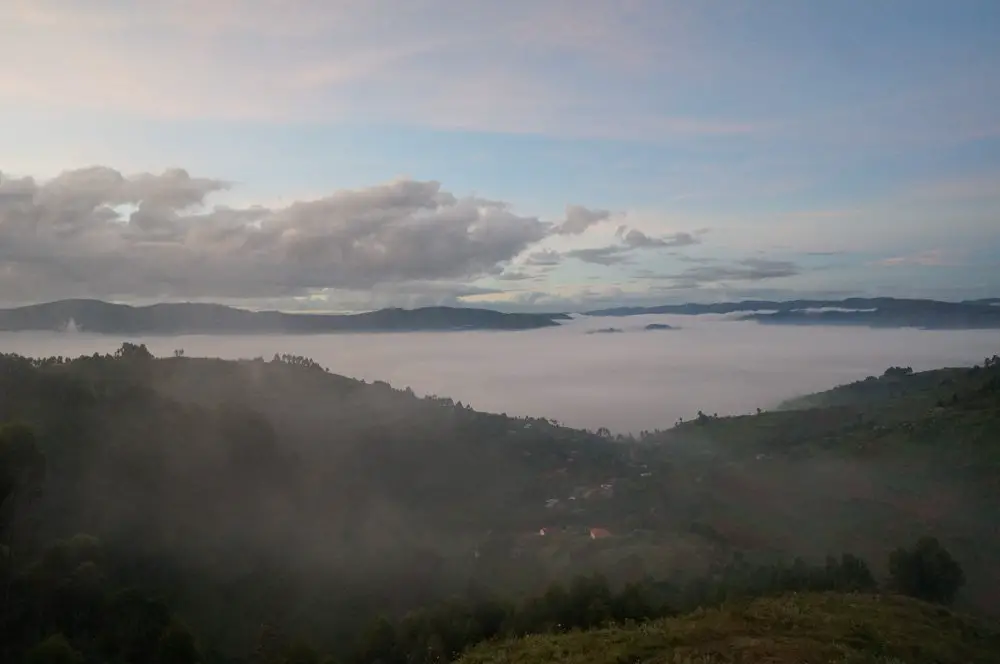
Hallelujah, our prayers were answered. As the sun rose, there wasn’t a single cloud in the sky and while the weather could change ANYTIME in Uganda, it looked promising. Two hours later, after driving and stopping to take some pictures of the beautiful mountains scenery (we are trekking Mountain gorillas after all), we finally reach the gate of the Bwindi Impenetrable Park.
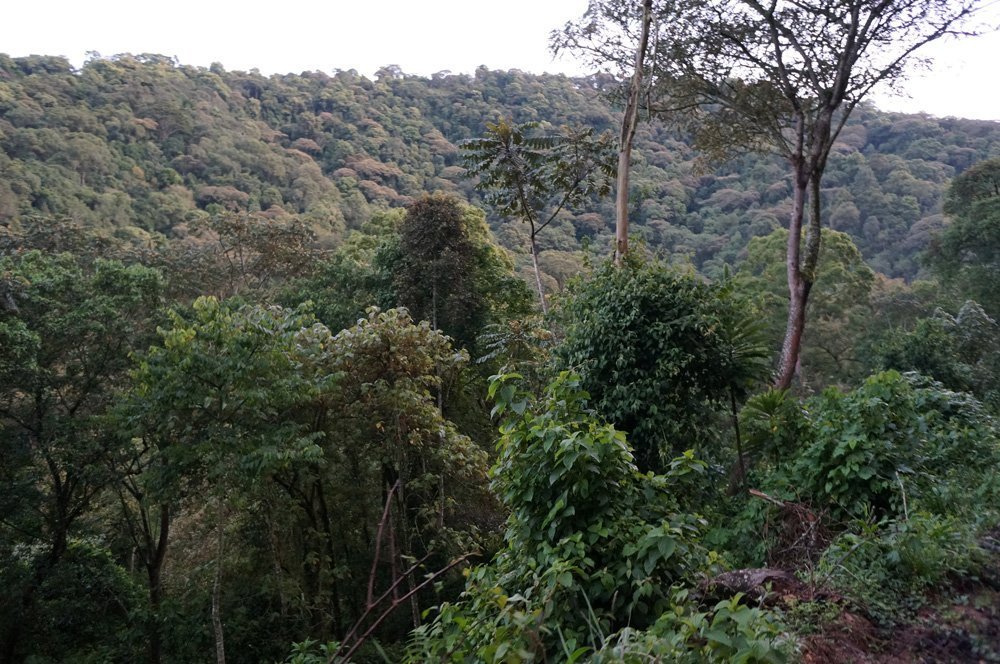
Entering the jungle
We are finally in the jungle. The scenery changes quite drastically from open hilly farmland to the densest greenest forrest I’ve ever seen. We drive for another half hour before reaching the Mgahinga Camp, our base camp for trekking. Last chance to use the bathrooms here and to get organized before going! We’re briefed by our guide about the forest, gorillas, the history of gorilla conservation, and about the specific Gorilla family we will be trekking to, the Bitukura family. There are multiple families of gorilla scattered throughout the park. One group of trekkers will go to a specific family in a day. They try to keep the groups small in size so to not disturb the gorillas and give everyone a better viewing experience.

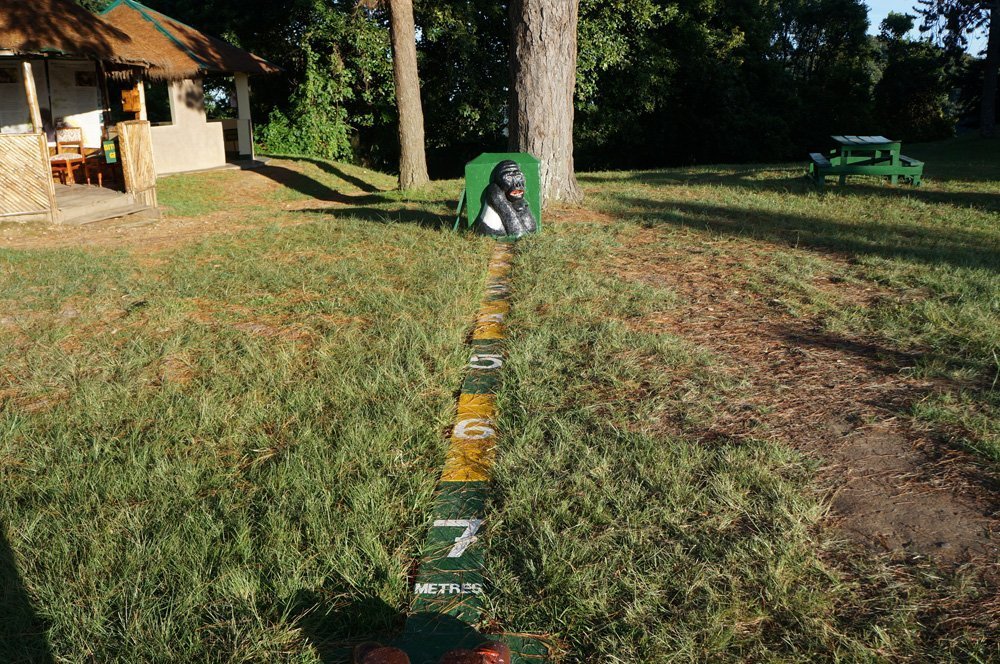
How do we find a few apes in a jungle the size of Los Angeles? Expert trackers are sent out hours before the trekkers arrive at the campsite to look for the gorillas. Gorillas can travel many km in a day to look for food and hence why the trekking time can range so much. We leave the camp at 8:30am by foot (sometimes they take trekkers via car to closer launch point depending on the Gorillas’ location), and we’re off!
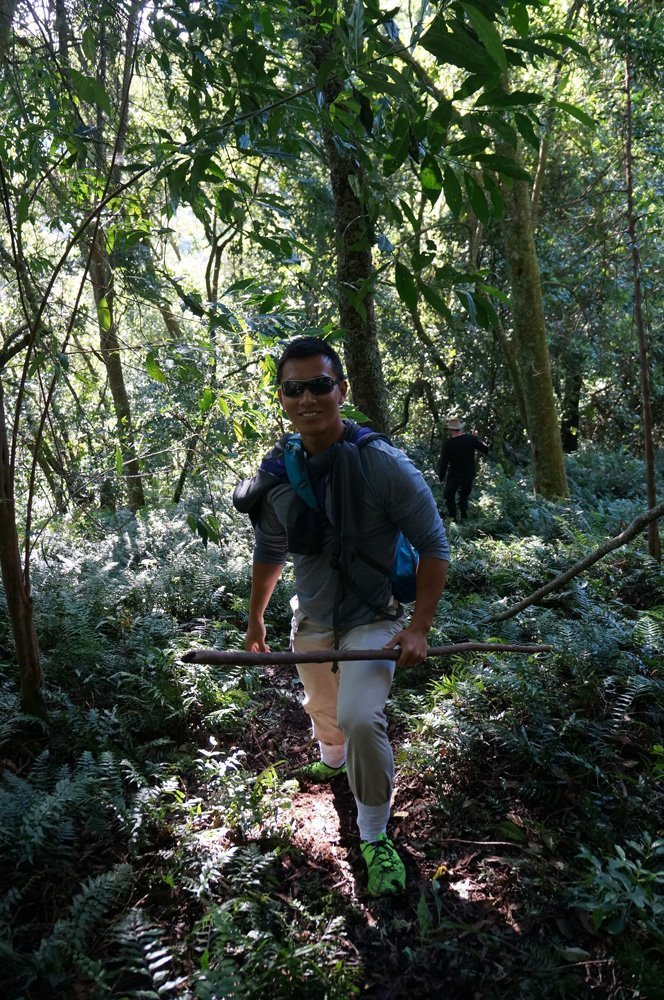
And the trek begins
The weather at this point is still holding up and we see nothing but blue skies. Looks like today will be perfect! As we descend down into the jungle, it really lives up to the “impenetrable” part of its name. We are accompanied by a guide, and two soldiers wielding AKs in case we run into forest elephants, leopards, or wild gorillas. The vegetation is gets thick quickly and this is where a guide with a machete leading the way is essential. The walking sticks given to use at the camp become increasingly useful as the terrain becomes increasingly more rugged.
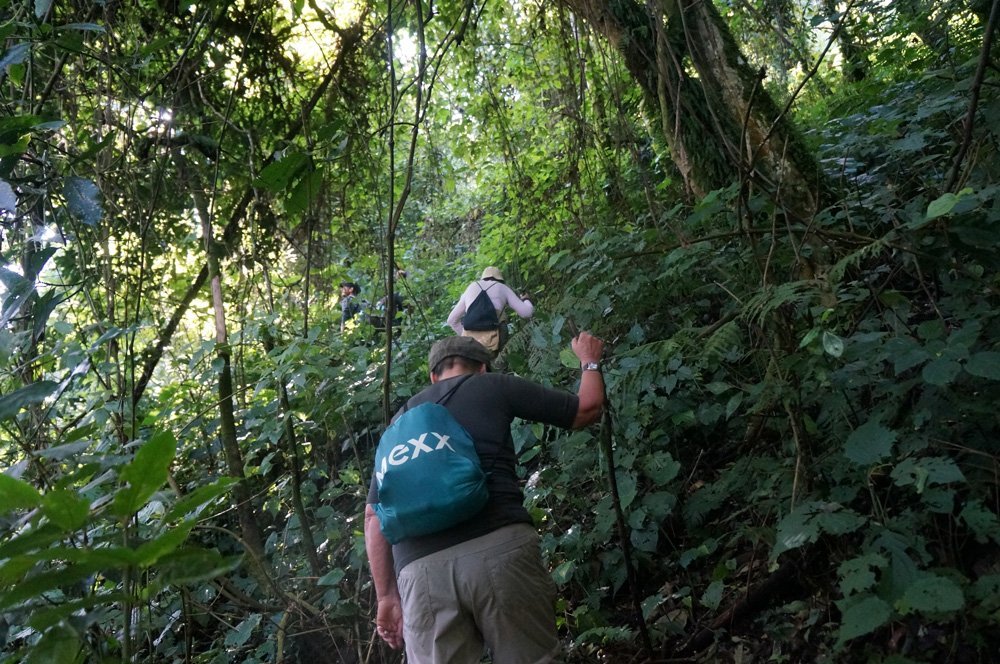
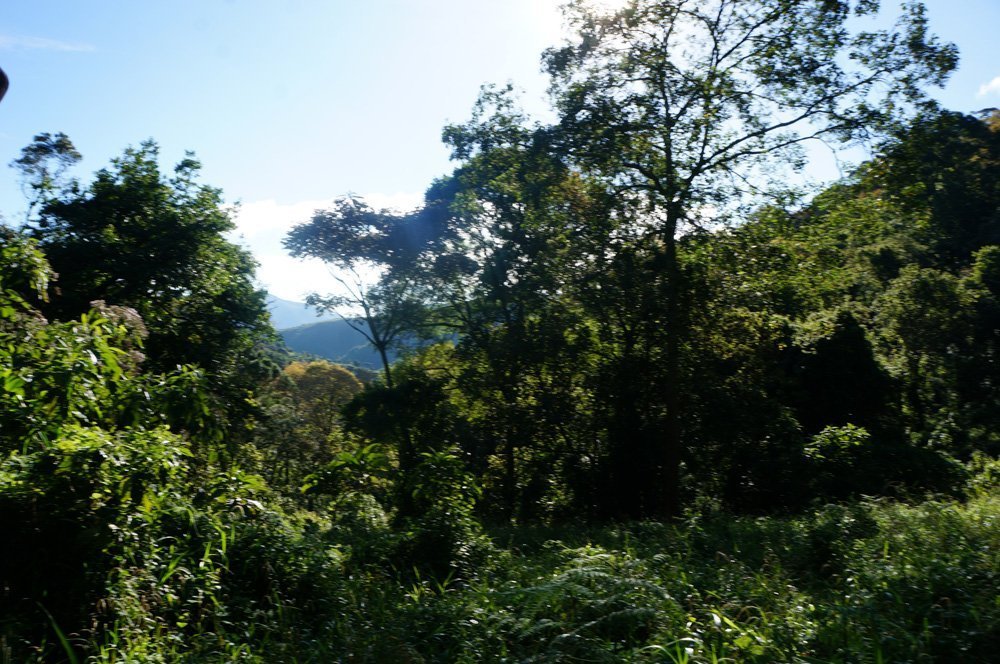
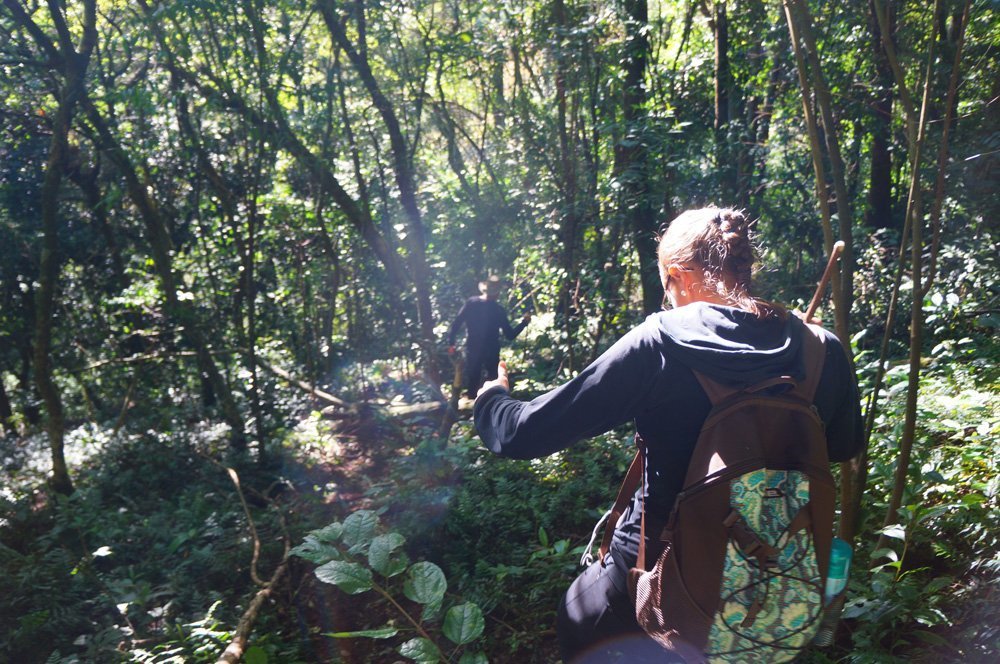
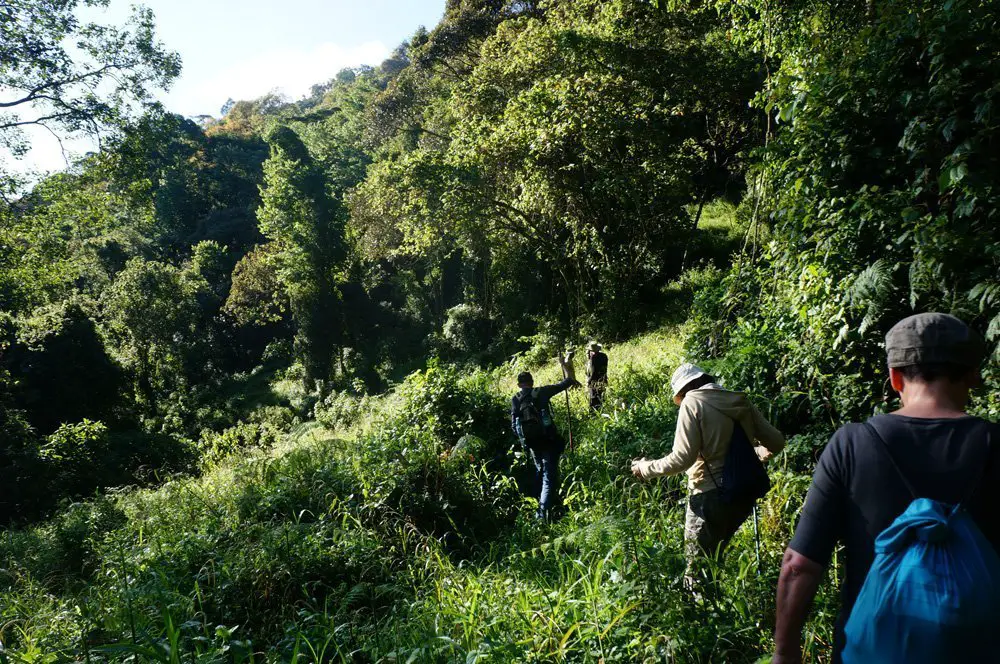
All in all, I didn’t think the hike to be that difficult but we all counted our lucky stars because had it monsooned like it did the day before, the trek would have been infinitely more difficult and miserable. I slipped a few times and got a little muddy but nothing more than that. After about 1.5 hours of hiking, the ranger tells us we’re close. A few more minutes later, we have see one! Once we arrive at the family, we have 1 hour to spend with them so to not make them uncomfortable and to minimize the spread of disease as gorillas are very susceptible to human illnesses.
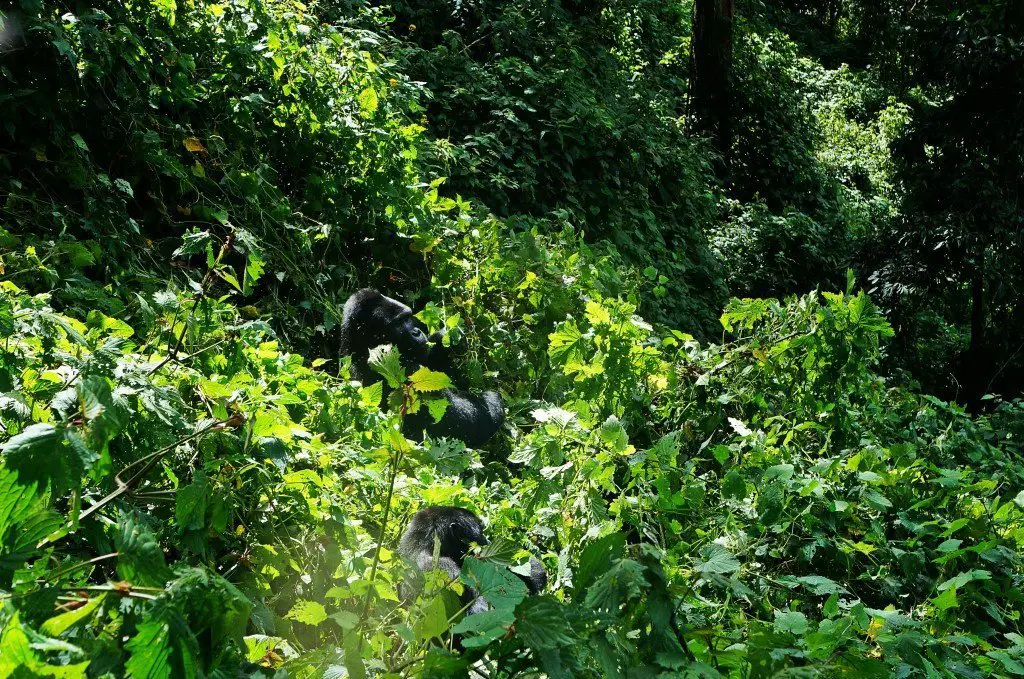
And finally, the gorillas
The first time I came face to face with a gorilla in its natural habitat is a feeling that can’t be described with words. The expression for something so spectacular that it “leaves you breathless” applied here. I had to inhale an extra time or two to soak all of what I was seeing. The Bitukura family has four silverbacks (one dominant male) and we saw one of them immediately. He looked over at us while chowing on some leaves and didn’t seem too bothered by us. Because of the dense foliage of the jungle, it is hard to get a good picture especially if you have a DSLR and don’t know how to focus it properly.
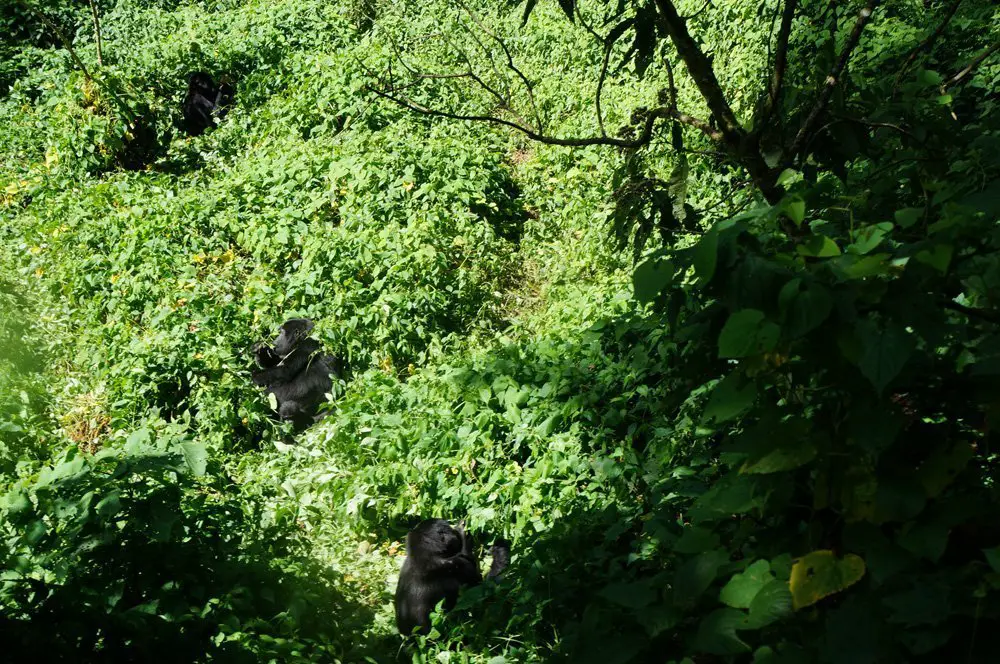
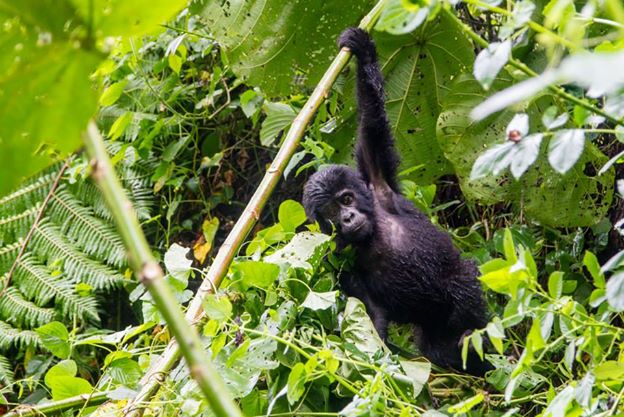
As we struggled to get a good picture of the silverback, out of nowhere, one of the infants of the family came out of nowhere and rolled into one of my group members proceeding to chill right next to us. The infant was no more than 1 meter from us and I had to repeatedly remember not to touch it. The rules are you cannot go close to them but they can come to you . The younger gorillas are more energetic and are curious about people and it was looking at all of us while chowing on some leaves. We snapped out many pictures before it decided it was bored and walked away to join the rest of its family.
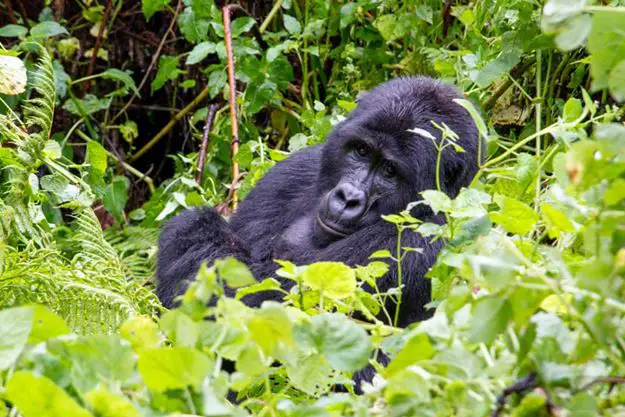
Face to face with the silverback
Sometimes, the families will stay in the same place if they’ve found good food. On this day, they were constantly on the move. They don’t move very fast so we strolled along following them, taking pictures, soaking in the full experience. As the playful infant left us, we came up on another silverback that was no more than four meters from us. The ranger cleared some of the foliage so we could get a clearer view of it but the gorilla didn’t seem to be bothered by someone hacking away at his surroundings.
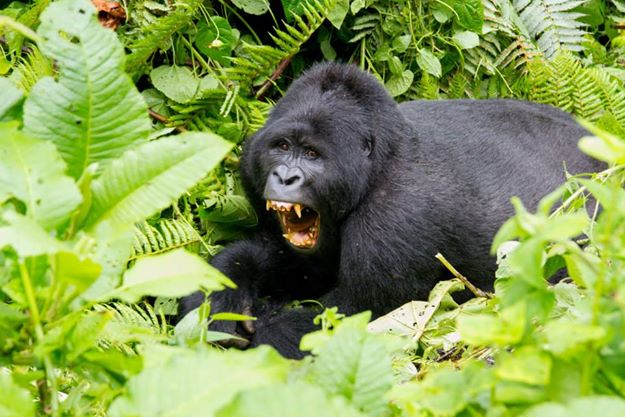
At this point, we were very close and the ranger told us not to fall as we walked closer as to not surprise him. Of course, I end up falling right away. The silverback, a huge one, quickly sits up and looks straight at me. It’s never good to look a silverback in the eyes as it invites competition but I forgot this as I was scared shitless. The silverback turns around and starts walking towards me! I’m still looking at it (big mistake) and am about to pee my pants at this point. Silverbacks can lift up to 8 times its weight, and this guy being around 220kg, could take one swing and it’d be it for me. It came up within two meters of me, looked at me, and turned around and walked away. Wow. Certainly one of the easiest ways to raise one’s heart rate.
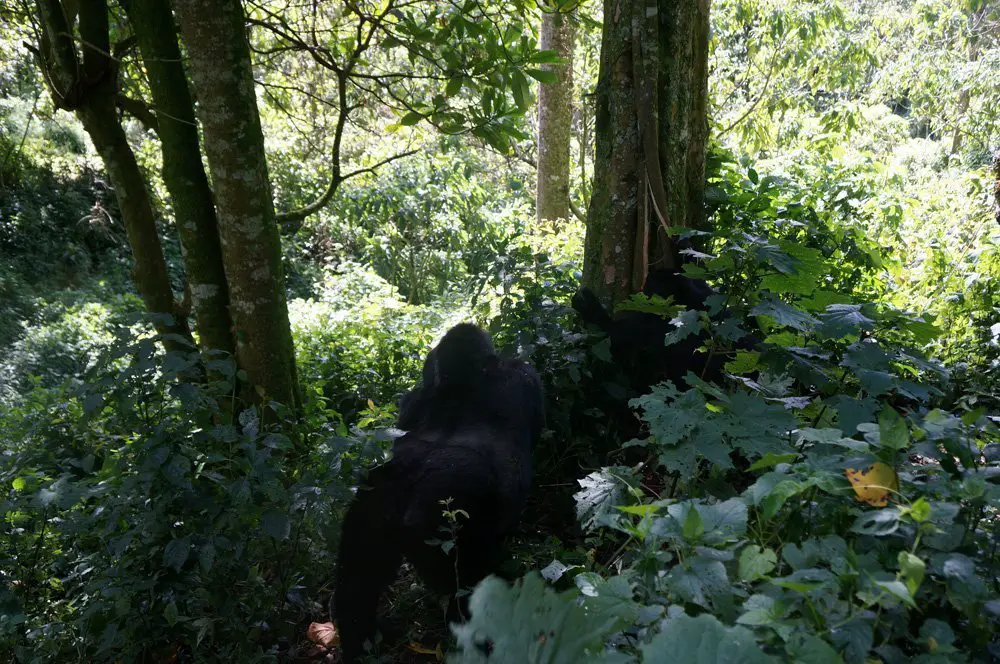
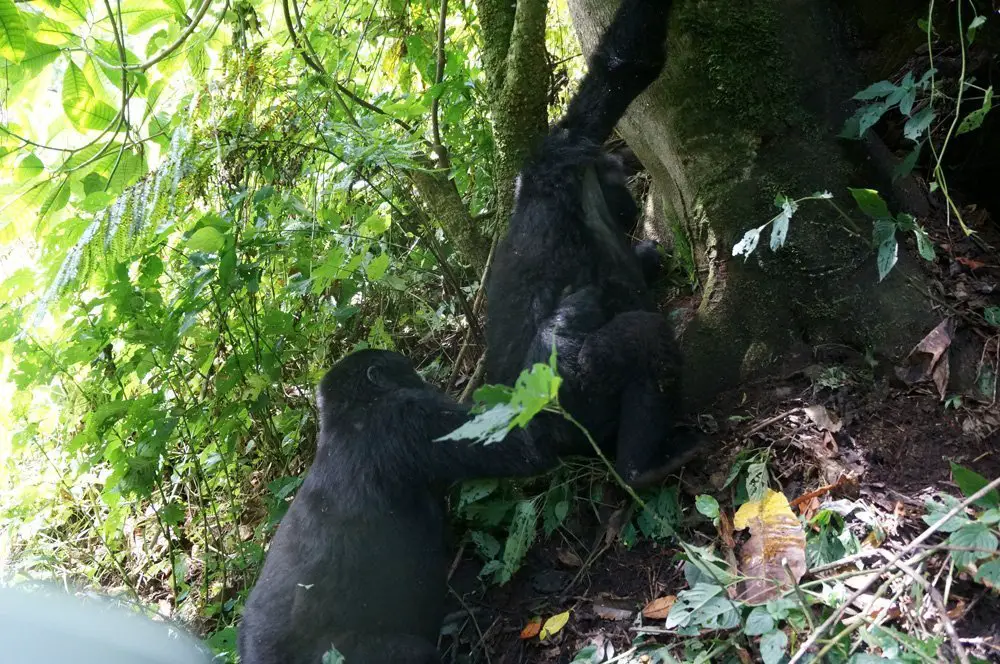
More gorilla fun
We follow the silverbacks as they search for the best food until I stumble upon two teenage gorillas nestled in the trees. They spot us but don’t seem fazed and were playing with each other. It’s a brother and sister we’re told and they almost seemed like they were happy to see us. They started fighting and screaming, hitting and biting at each other. They fell off the tree branch and were less than a meter from us.

One of them actually ran towards a person in my group and smacked him on the leg, and ran back up the tree to continue their playing. They wrestled for a good ten minutes in front of us as we watched, took pictures, and just loved what we were seeing. Short of two silverbacks fighting for dominance, this was about as good as it gets! The hour we had with them felt like ten minutes and I could have easily continued following them for another five hours.
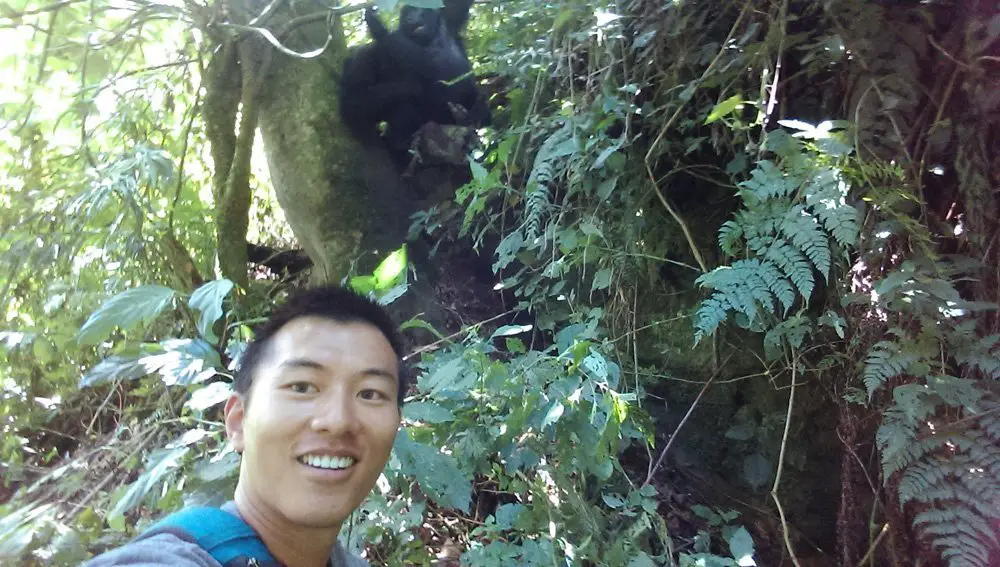
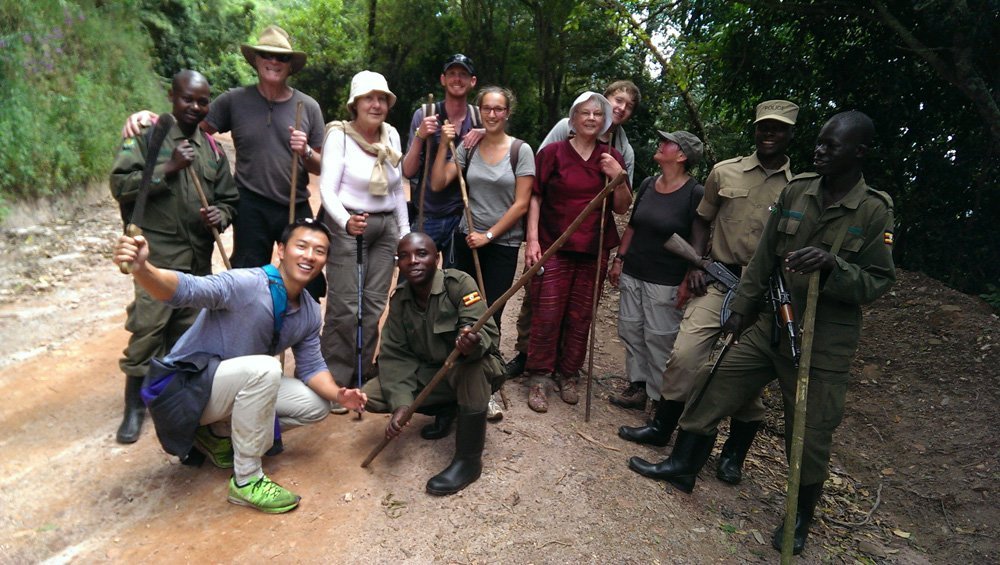
Alas, the experience was unforgettable as we trek back towards the camp. It was just after noon when we exited the jungle but I was honestly ready to hike for many more hours. It’s not every day that you get to be in a jungle in the heart of Africa looking for gorillas. When we reach the campsite, we get our certificates for trekking, eagerly give tips to our rangers and we’re on our way back to Lake Bunyonyi looking back at an experience we won’t soon forget.
As we return to out campsite, the trekkers from the previous day eagerly awaited our return hoping we would exhibit the struggles they had to endure but their dreams were crushed. Not a single drop of rain the entire day and aside from a few grass marks on my pants, I was clean.
Nevertheless, we all celebrated that night over some well deserved 2$ Ugandan beers and 4$ pints of vodka as this marked the end of all our gorilla treks!
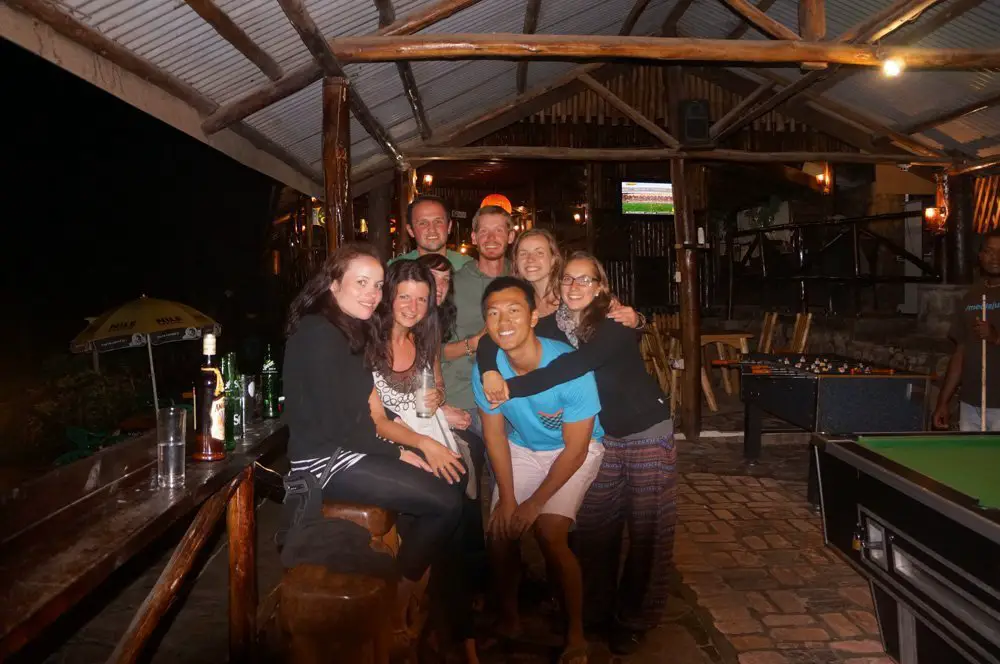



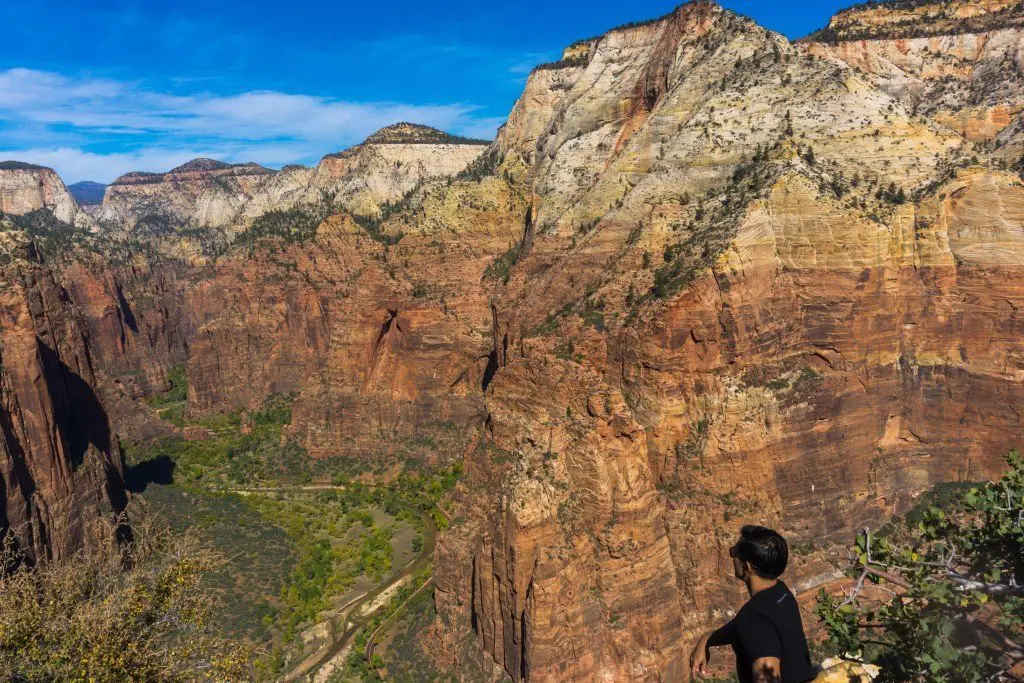
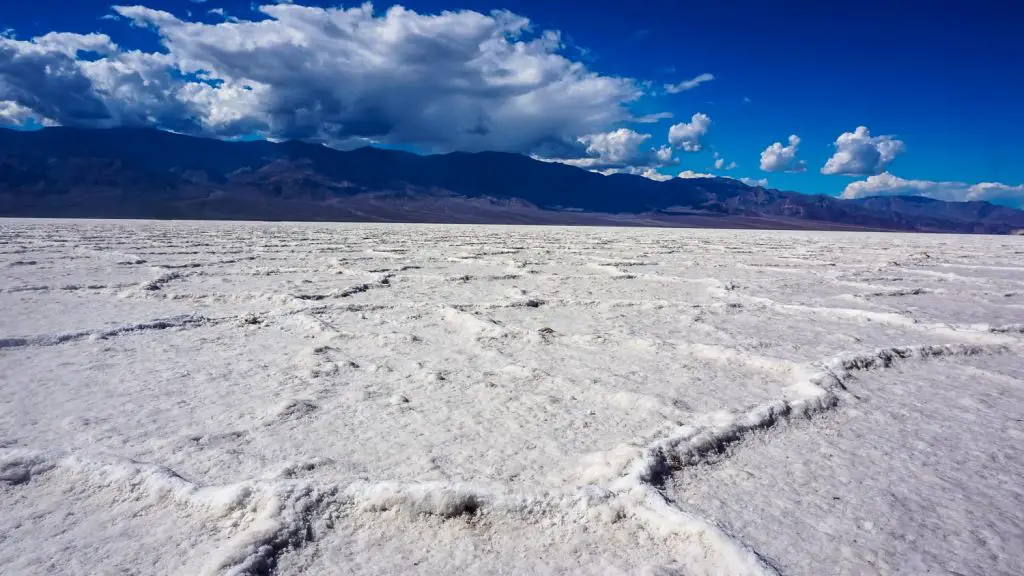
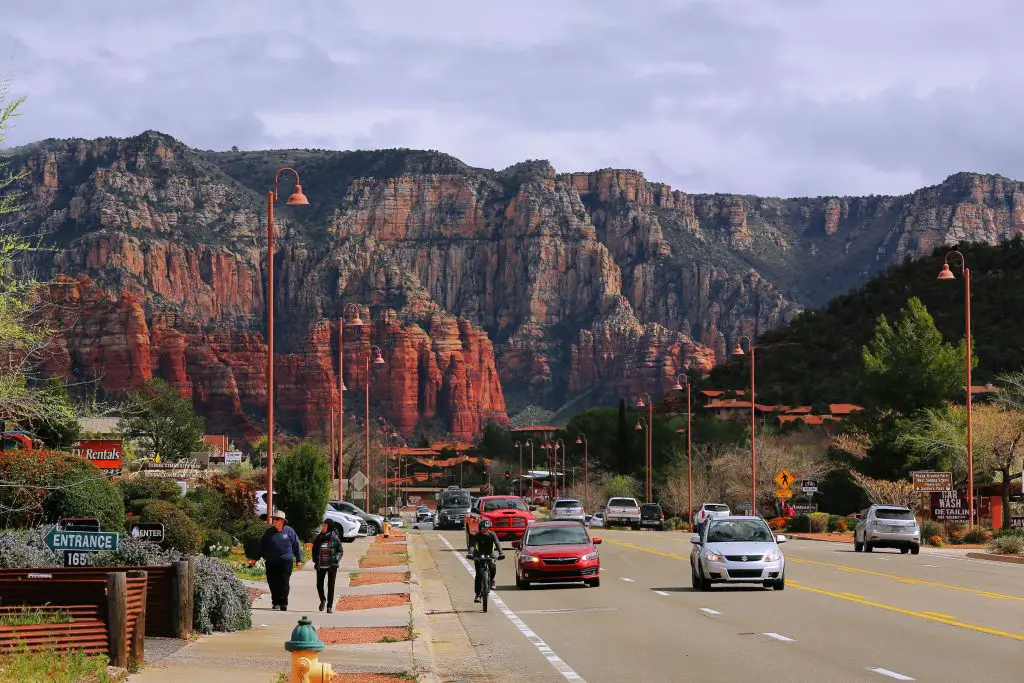
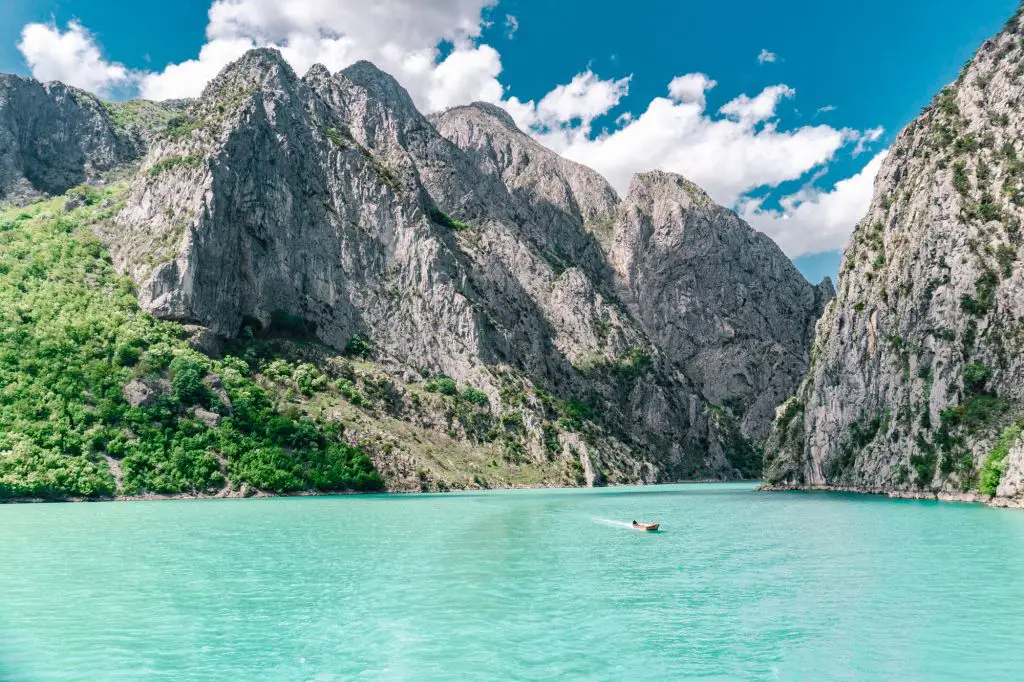


What an incredible experience and such amazing photos you took! I’m thinking of doing this next year as well. Do you know if Uganda still gives out discounts on wet season gorilla passes? I want to save money and take my chances like you did 🙂
Thanks Cassandra! You will love it without a doubt. I’m not sure if they keep the wet season discount but I would certainly start looking nearer the end of the year if they will do it for 2016.
http://www.bwindiforestnationalpark.com/
I have read so many posts about the blogger lovers
however this article is actually a nice post, keep it up.
Thanks Micki, appreciate the comment and glad you enjoyed the read!